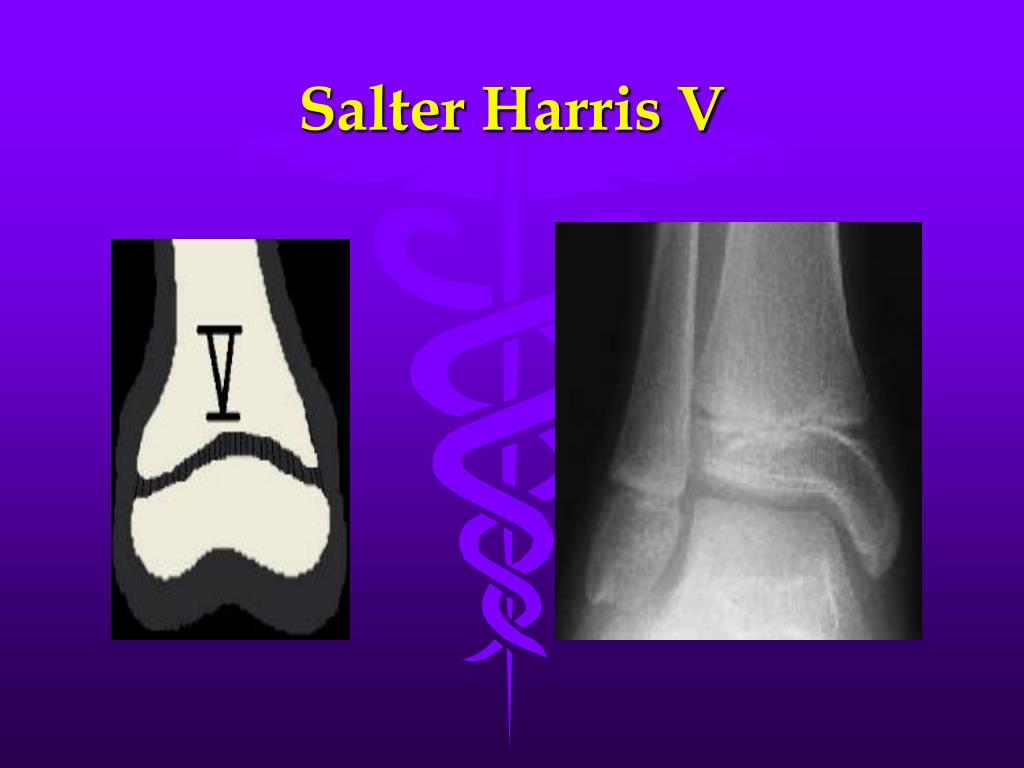
Usually, types 1 and 2 are simpler and don’t require surgery. Treatment will depend on the type of Salter-Harris fracture, the bone involved, and whether the child has any additional injuries. A widening of the growth plate may provide a clue to this type of injury. Type 5 fractures are difficult to diagnose.

CT scans are also used as a guide in surgery.A CT scan and possibly an MRI may be useful for evaluating the fracture.Other imaging tests may be needed if the fracture is complex, or if the doctor needs a more detailed view of soft tissue: A repeat X-ray in three or four weeks can confirm the fracture diagnosis by imaging new growth along the break area. If a fracture is suspected but doesn’t show up in the image, the doctor may use a cast or splint to protect the area. The doctor may also want an X-ray of the unaffected side to compare them. They’ll likely order an X-ray of the area, and possibly of the area above and below the injury site. The doctor will want to know how the injury occurred, whether the child has had previous fractures, and whether there was any pain in the area before the injury. Prompt treatment for growth plate fractures is important. If you suspect a fracture, take your child to a doctor or the emergency room. Type 9 which affects the fibrous membrane of the bone.Type 6 which affects connective tissue.Other typesĪnother four fracture types are extremely rare. It’s often misdiagnosed, and the damage can interfere with bone growth. The knee and ankle are most often involved.įewer than 1 percent of Salter-Harris fractures are type 5. This uncommon fracture occurs when the growth plate is crushed or compressed. This can happen at any age, and it may affect bone growth. This fracture occurs when a force hits the growth plate, the rounded part of the bone, and the bone shaft.Ībout 10 percent of Salter-Harris fractures are type 4. About 10 percent of Salter-Harris fractures are type 3. The fracture may involve cartilage and enter into the joint. This fracture occurs when a force hits the growth plate and the rounded part of the bone, but doesn’t involve the bone shaft.

About 75 percent of Salter-Harris fractures are type 2. This is the most common type and happens most often in children over 10. This fracture occurs when the growth plate is hit and splits away from the joint along with a small piece of the bone shaft.

About 5 percent of Salter-Harris fractures are type 1. This fracture occurs when a force hits the growth plate separating the rounded edge of the bone from the bone shaft. The narrower part of the bone is called the metaphysis. The rounded bone edge is called the epiphysis. The growth plate is known as the physis, from the Greek word “to grow.” The growth plate is located between the rounded top of the bone and the bone shaft. The higher numbers have a higher risk of possible growth problems.

There are five main types, distinguished by the way the injury impacts the growth plate and surrounding bone. Salter-Harris fractures were first categorized in 1963 by Canadian doctors Robert Salter and W.


 0 kommentar(er)
0 kommentar(er)
